-
 Bitcoin
Bitcoin $117900
0.31% -
 Ethereum
Ethereum $3766
0.28% -
 XRP
XRP $3.176
-0.31% -
 Tether USDt
Tether USDt $1.000
0.00% -
 BNB
BNB $795.6
1.51% -
 Solana
Solana $186.8
-1.09% -
 USDC
USDC $0.9999
-0.01% -
 Dogecoin
Dogecoin $0.2353
-1.33% -
 TRON
TRON $0.3226
1.49% -
 Cardano
Cardano $0.8172
-1.08% -
 Sui
Sui $4.178
3.06% -
 Hyperliquid
Hyperliquid $43.05
-3.39% -
 Stellar
Stellar $0.4367
-0.57% -
 Chainlink
Chainlink $18.62
1.47% -
 Hedera
Hedera $0.2828
6.63% -
 Bitcoin Cash
Bitcoin Cash $584.7
5.65% -
 Avalanche
Avalanche $24.81
2.53% -
 Litecoin
Litecoin $112.8
-0.88% -
 UNUS SED LEO
UNUS SED LEO $8.975
-0.08% -
 Shiba Inu
Shiba Inu $0.00001395
-1.07% -
 Toncoin
Toncoin $3.285
-1.05% -
 Ethena USDe
Ethena USDe $1.001
0.01% -
 Polkadot
Polkadot $4.123
0.76% -
 Uniswap
Uniswap $10.49
-0.18% -
 Monero
Monero $326.5
0.14% -
 Dai
Dai $0.9999
-0.02% -
 Bitget Token
Bitget Token $4.576
0.34% -
 Pepe
Pepe $0.00001247
-1.55% -
 Cronos
Cronos $0.1400
3.77% -
 Aave
Aave $295.1
-0.73%
What is the impact of RSI falling below 50? Is it a signal of weakening?
When the RSI falls below 50 in crypto trading, it signals waning bullish momentum, prompting traders to reassess positions and consider bearish trends.
Jun 09, 2025 at 09:15 am
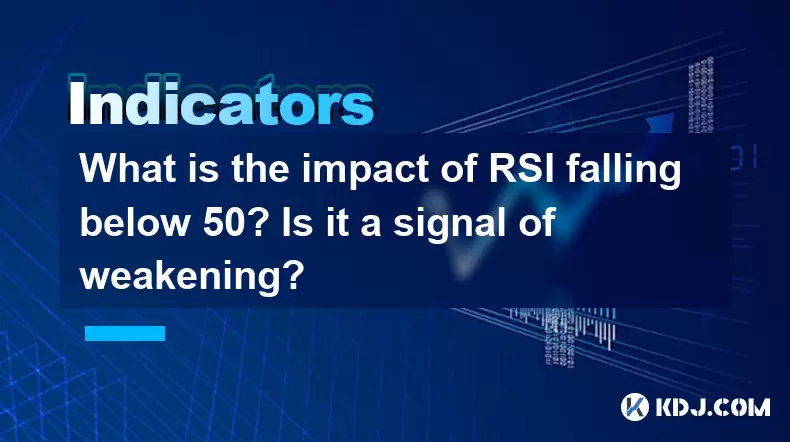
The Relative Strength Index (RSI) is a momentum oscillator used in technical analysis to measure the speed and change of price movements of a security. The RSI value ranges from 0 to 100, and a common interpretation is that an asset is considered overbought when the RSI is above 70 and oversold when it is below 30. However, a less discussed but equally important level is the 50 threshold. When the RSI falls below 50, it often indicates that the momentum is shifting from bullish to bearish. This article will explore the implications of the RSI falling below 50 in the context of cryptocurrency trading and whether it can be interpreted as a signal of weakening.
Understanding the RSI and its 50 Level
The RSI is calculated using the average gain and loss of an asset over a specified period, typically 14 days. The formula for RSI is as follows:
[ \text{RSI} = 100 - \frac{100}{1 + \text{RS}} ]
where RS (Relative Strength) is the average gain divided by the average loss.
The 50 level on the RSI scale is significant because it acts as a midpoint between the overbought and oversold regions. When the RSI falls below 50, it suggests that the average gains are no longer outweighing the average losses, which can be an early indication of a potential downtrend.
RSI Falling Below 50: A Signal of Weakening?
In the world of cryptocurrencies, where volatility is high, the RSI can be a valuable tool for traders. When the RSI falls below 50, it does not necessarily mean that a bearish trend is imminent, but it does indicate that the bullish momentum is waning. This can be a warning sign for investors who are holding long positions, as it may suggest that the asset's price is losing upward momentum.
For example, if Bitcoin's RSI falls from 60 to 48, it might not be enough to trigger a sell-off immediately, but it could prompt traders to re-evaluate their positions. The fall below 50 could be the first sign of a weakening trend, and traders might start to take profits or tighten their stop-loss orders to protect against potential downside.
Using RSI Below 50 in Trading Strategies
Traders often incorporate the RSI into their strategies to identify potential entry and exit points. When the RSI falls below 50, it can be used as part of a broader analysis to make trading decisions. Here are some ways traders might use this signal:
- Confirmation of Downtrend: If the RSI falls below 50 and other technical indicators, such as moving averages, also show bearish signals, it can confirm a potential downtrend.
- Exit Long Positions: Traders might use the RSI falling below 50 as a signal to exit long positions, especially if the RSI had been trending higher before this drop.
- Entry for Short Positions: Conversely, if the RSI falls below 50 and other indicators suggest a bearish trend, traders might consider entering short positions.
Case Studies: RSI Below 50 in Cryptocurrency Markets
To better understand the impact of the RSI falling below 50, let's look at some historical examples from the cryptocurrency market.
- Bitcoin in 2021: In May 2021, Bitcoin's RSI fell below 50 after a period of sustained bullish momentum. This was followed by a significant price drop, indicating that the fall below 50 was indeed a signal of weakening.
- Ethereum in 2020: In March 2020, Ethereum's RSI fell below 50 amidst broader market volatility. While the RSI alone did not predict the subsequent price movements, it was part of a broader set of indicators that suggested a bearish trend.
These examples illustrate that while the RSI falling below 50 is not a definitive signal of a bearish trend, it can be a crucial part of a trader's toolkit for assessing market conditions.
Limitations and Considerations
While the RSI is a powerful tool, it is not without its limitations. Traders should be aware of the following when using the RSI falling below 50 as a signal:
- False Signals: The RSI can sometimes give false signals, especially in highly volatile markets like cryptocurrencies. A fall below 50 might not always lead to a sustained downtrend.
- Divergence: Traders should also look for divergence between the RSI and price action. If the price is making new highs while the RSI is falling below 50, it could be a sign of a potential reversal.
- Time Frame: The significance of the RSI falling below 50 can vary depending on the time frame. On shorter time frames, the signal might be less reliable than on longer time frames.
Combining RSI with Other Indicators
To increase the reliability of the RSI falling below 50 as a signal, traders often combine it with other technical indicators. Some common combinations include:
- Moving Averages: If the RSI falls below 50 and the price crosses below a key moving average, it can reinforce the bearish signal.
- MACD: The Moving Average Convergence Divergence (MACD) can provide additional confirmation if it also shows bearish signals when the RSI falls below 50.
- Volume: High trading volume accompanying the RSI falling below 50 can indicate stronger bearish momentum.
By using the RSI in conjunction with other indicators, traders can gain a more comprehensive view of the market and make more informed trading decisions.
FAQs
Q: Can the RSI falling below 50 be a signal to buy in a downtrend?
A: While the RSI falling below 50 generally indicates weakening momentum, it can also be used as a signal to buy in a downtrend if other indicators suggest that the asset is oversold. For example, if the RSI falls below 30 after crossing below 50, it might indicate that the asset is due for a rebound.
Q: How often should I check the RSI to monitor for a fall below 50?
A: The frequency of checking the RSI depends on your trading style and time frame. For day traders, checking the RSI multiple times a day might be necessary, while swing traders might check it less frequently, such as daily or weekly.
Q: Is the RSI falling below 50 more significant in certain types of cryptocurrencies?
A: The significance of the RSI falling below 50 can vary depending on the volatility and market cap of the cryptocurrency. For highly volatile altcoins, the signal might be less reliable than for more stable cryptocurrencies like Bitcoin or Ethereum.
Q: Can the RSI falling below 50 be used as a standalone signal for trading?
A: While the RSI falling below 50 can provide valuable insights, it is generally not recommended to use it as a standalone signal for trading. Combining it with other technical indicators and fundamental analysis can provide a more robust trading strategy.
Disclaimer:info@kdj.com
The information provided is not trading advice. kdj.com does not assume any responsibility for any investments made based on the information provided in this article. Cryptocurrencies are highly volatile and it is highly recommended that you invest with caution after thorough research!
If you believe that the content used on this website infringes your copyright, please contact us immediately (info@kdj.com) and we will delete it promptly.
- Cryptos to Watch in 2025: Punisher Coin, Chainlink, and the Altcoin Arena
- 2025-07-27 18:30:13
- Bitcoin, Altcoins, Rebound: Navigating the Crypto Comeback Trail
- 2025-07-27 18:30:13
- Ethereum, Bitcoin, and Altcoins: A Shift in Crypto Tides?
- 2025-07-27 19:10:13
- Windtree Therapeutics' Bold BNB Strategy: A $520 Million Crypto Play
- 2025-07-27 19:10:13
- Solana, Staking, and Unilabs: What's the Buzz in the Crypto Space?
- 2025-07-27 16:50:13
- VeChain, HBAR, Remittix: Navigating the Crypto Landscape in 2025
- 2025-07-27 17:10:12
Related knowledge
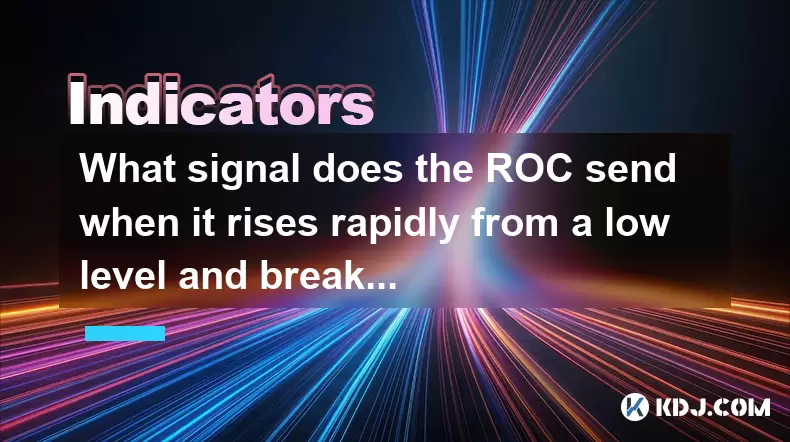
What signal does the ROC send when it rises rapidly from a low level and breaks through the zero axis?
Jul 27,2025 at 10:15am
Understanding the Rate of Change (ROC) IndicatorThe Rate of Change (ROC) is a momentum-based oscillator used in technical analysis to measure the perc...
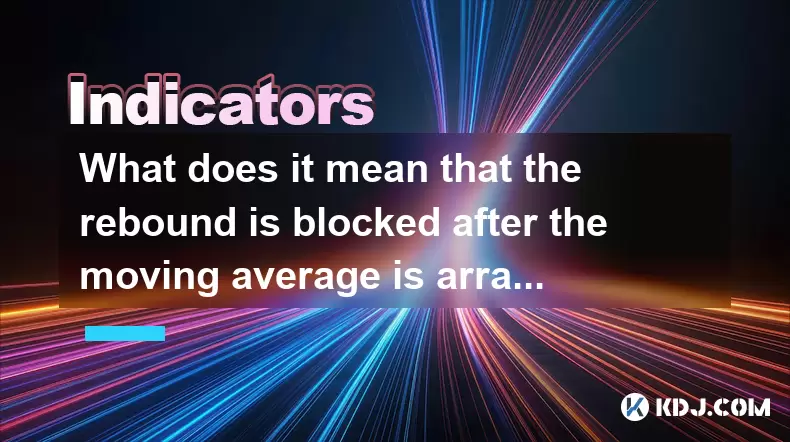
What does it mean that the rebound is blocked after the moving average is arranged in a short position for the first time?
Jul 26,2025 at 10:51am
Understanding the Short-Term Moving Average ConfigurationWhen traders refer to a 'short position arrangement' in moving averages, they are describing ...
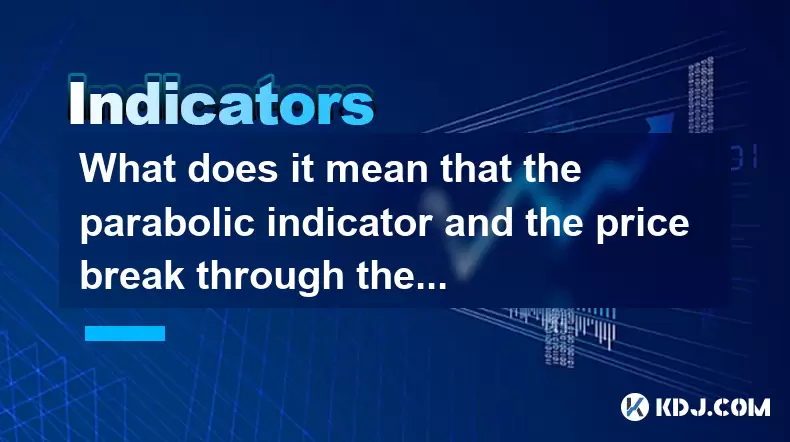
What does it mean that the parabolic indicator and the price break through the previous high at the same time?
Jul 26,2025 at 07:22pm
Understanding the Parabolic Indicator (SAR)The Parabolic SAR (Stop and Reverse) is a technical analysis tool developed by J. Welles Wilder to identify...
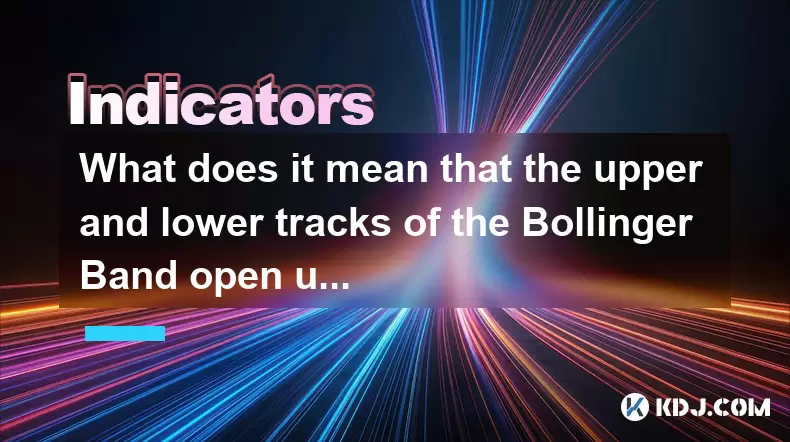
What does it mean that the upper and lower tracks of the Bollinger Band open upward at the same time?
Jul 27,2025 at 02:49pm
Understanding the Bollinger Band StructureThe Bollinger Band is a widely used technical analysis tool developed by John Bollinger. It consists of thre...
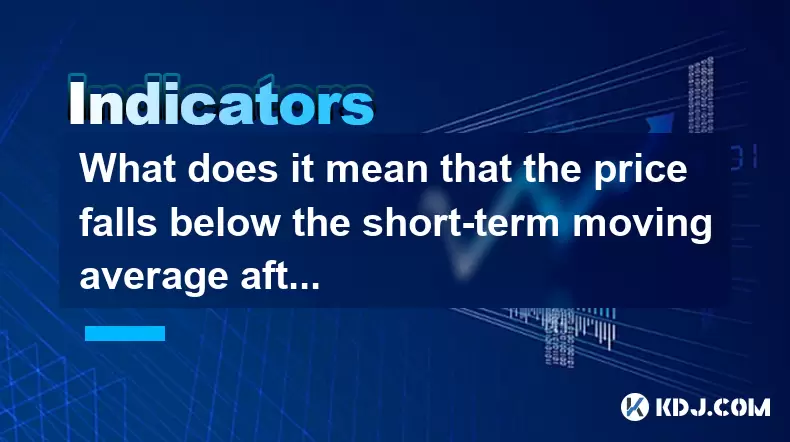
What does it mean that the price falls below the short-term moving average after the RSI top divergence?
Jul 26,2025 at 11:01pm
Understanding RSI Top Divergence in Cryptocurrency TradingThe Relative Strength Index (RSI) is a momentum oscillator widely used in cryptocurrency tra...
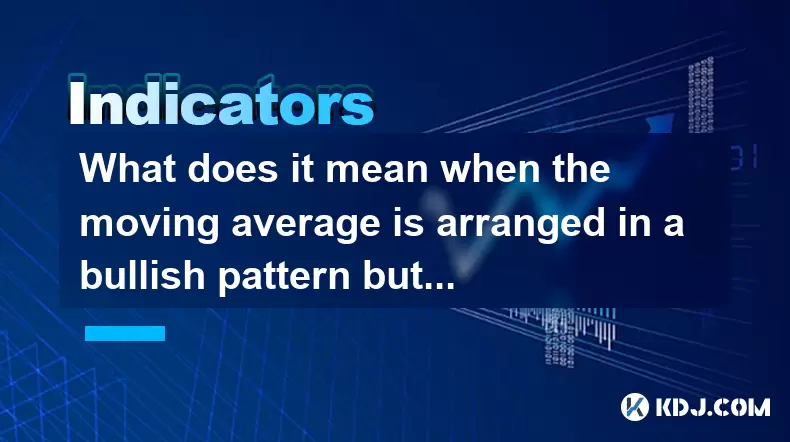
What does it mean when the moving average is arranged in a bullish pattern but the MACD bar is shortened?
Jul 27,2025 at 06:07am
Understanding the Bullish Moving Average PatternWhen traders observe a bullish moving average pattern, they typically refer to a configuration where s...

What signal does the ROC send when it rises rapidly from a low level and breaks through the zero axis?
Jul 27,2025 at 10:15am
Understanding the Rate of Change (ROC) IndicatorThe Rate of Change (ROC) is a momentum-based oscillator used in technical analysis to measure the perc...

What does it mean that the rebound is blocked after the moving average is arranged in a short position for the first time?
Jul 26,2025 at 10:51am
Understanding the Short-Term Moving Average ConfigurationWhen traders refer to a 'short position arrangement' in moving averages, they are describing ...

What does it mean that the parabolic indicator and the price break through the previous high at the same time?
Jul 26,2025 at 07:22pm
Understanding the Parabolic Indicator (SAR)The Parabolic SAR (Stop and Reverse) is a technical analysis tool developed by J. Welles Wilder to identify...

What does it mean that the upper and lower tracks of the Bollinger Band open upward at the same time?
Jul 27,2025 at 02:49pm
Understanding the Bollinger Band StructureThe Bollinger Band is a widely used technical analysis tool developed by John Bollinger. It consists of thre...

What does it mean that the price falls below the short-term moving average after the RSI top divergence?
Jul 26,2025 at 11:01pm
Understanding RSI Top Divergence in Cryptocurrency TradingThe Relative Strength Index (RSI) is a momentum oscillator widely used in cryptocurrency tra...

What does it mean when the moving average is arranged in a bullish pattern but the MACD bar is shortened?
Jul 27,2025 at 06:07am
Understanding the Bullish Moving Average PatternWhen traders observe a bullish moving average pattern, they typically refer to a configuration where s...
See all articles

























































































